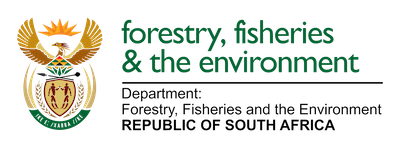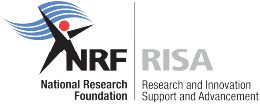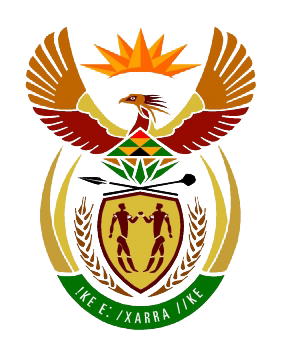by Ria Olivier | Feb 3, 2025 | Announcement, Geomorphology, Important Dates, Research, SANAP, SANAP Student, Science
 The International Conference on Geomorphology (ICG) 2025 is set to take place in breathtaking New Zealand, a land renowned for its dynamic landscapes and geological wonders. This global gathering of geomorphologists will provide a platform for cutting-edge discussions on landform processes, climate interactions, and Earth surface dynamics. We invite researchers, early-career scientists, and professionals to contribute to this exciting event by submitting abstracts to the special session:
The International Conference on Geomorphology (ICG) 2025 is set to take place in breathtaking New Zealand, a land renowned for its dynamic landscapes and geological wonders. This global gathering of geomorphologists will provide a platform for cutting-edge discussions on landform processes, climate interactions, and Earth surface dynamics. We invite researchers, early-career scientists, and professionals to contribute to this exciting event by submitting abstracts to the special session:
Geomorphological Insights from the Sub-Antarctic
Description: Sub-Antarctic islands, situated in the remote Southern Ocean, offer a unique geomorphological perspective due to their distinct geographical setting. These cold islands, characterized by both glacial and periglacial processes, provide crucial insights into the historical and ongoing changes in oceanic and atmospheric circulation patterns within the southern hemisphere mid-latitudes. Unlike their northern hemisphere counterparts, these islands experienced a different Last Glacial Maximum (LGM) and complex deglaciation, leading to unique geomorphological features and processes. The landforms of these islands serve as invaluable proxies for understanding landscape responses to climate change. Palaeo-climatic shifts have profoundly influenced geomorphological and cryogenic dynamics, shaping landforms and influencing ecosystem processes. Contemporary climatic changes, such as rising temperatures, moisture fluctuations, and increased frequency of extreme events, pose significant threats to these delicate geomorphological systems. These changes have the potential to push landscape and ecosystem processes beyond their existing environmental thresholds, impacting landforms and biodiversity. This session aims to explore the geomorphological significance of Sub-Antarctic islands and their role as indicators of environmental change. We invite contributions that highlight the geomorphological processes and dynamics that shape the landscape of these Sub- Antarctic Islands. Research focusing on the region’s geomorphological responses to past and present climatic conditions and the possible implications for ecosystem processes are particularly welcome. Emerging researchers are encouraged to submit their work to advance our understanding of these critical sentinel landscapes.
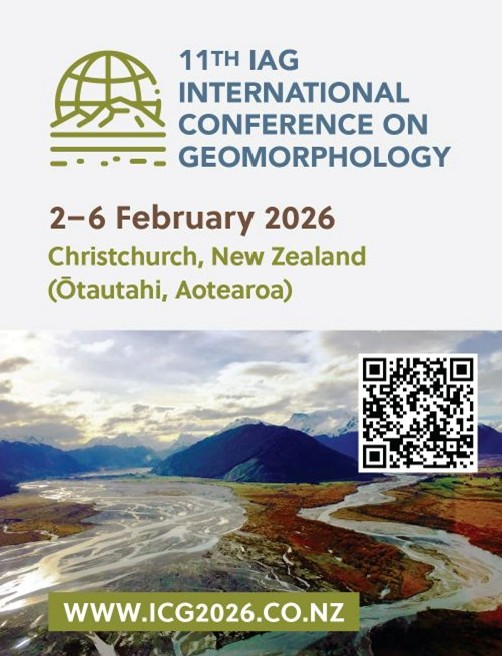
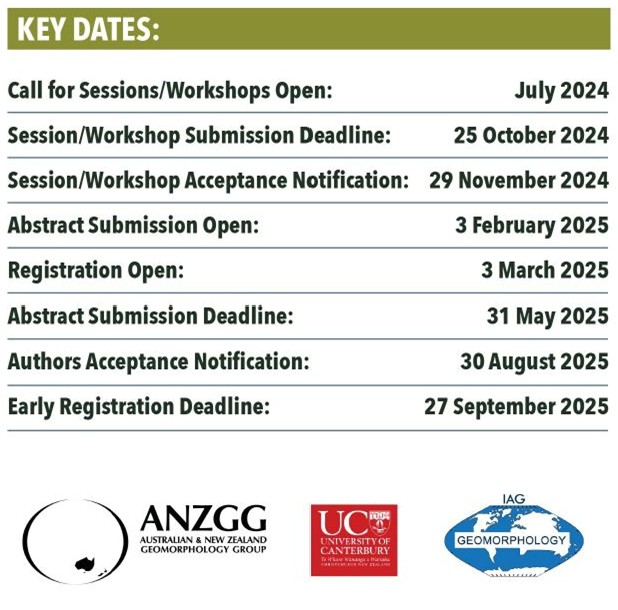 Who Should Submit?
Who Should Submit?
We strongly encourage early-career researchers, postgraduate students, and experienced scientists to contribute their work. This is an excellent opportunity to showcase your research to an international audience, gain valuable feedback, and network with leading experts in the field.
Abstract Submission Deadline: 31 May 2025!!
Don’t miss your chance to be part of ICG 2025 and contribute to this vital discussion on the evolving landscapes of the Sub-Antarctic.
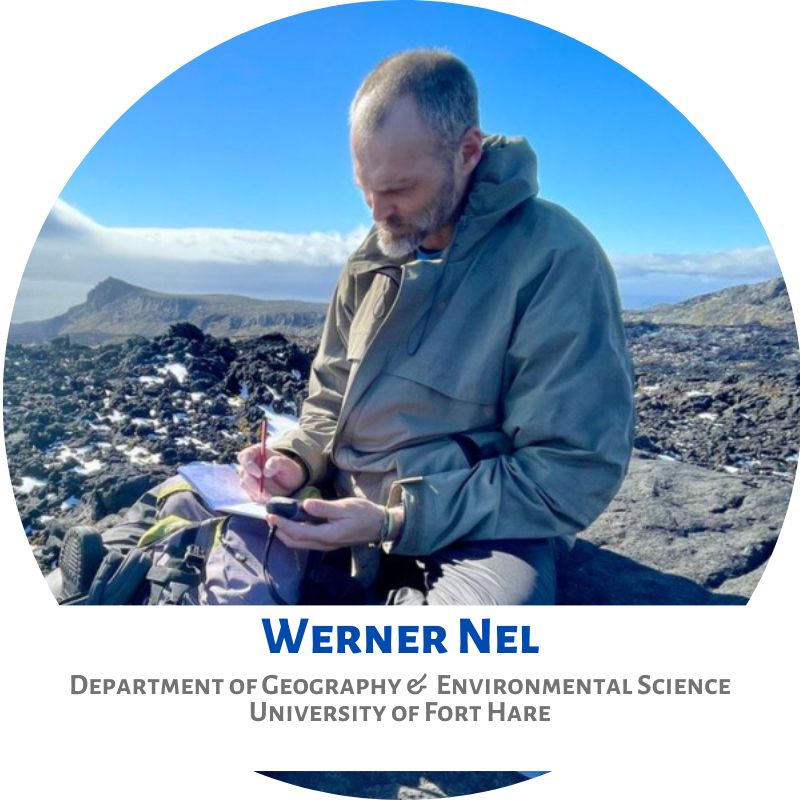 Message from Prof Werner Nel:
Message from Prof Werner Nel:
“Dear Friends and Colleagues, We are putting a session together for the International Conference on Geomorphology that will be held in Christchurch in February 2026. As you can see the session description is very open, so we can really put a nice diverse session together. We would like to ask you to consider submitting an abstract to the session.
Hope to see you there. All the best.” Werner Nel
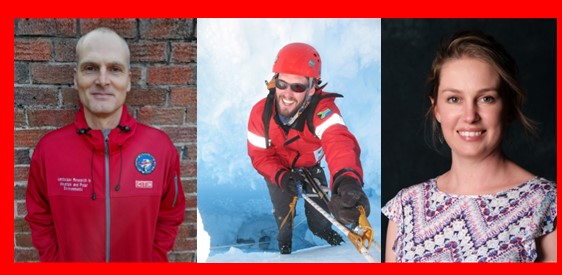
by Ria Olivier | Jul 1, 2024 | Geomorphology, Marion Island, Research, SANAP, Science
Twenty‐thousand‐year gap between deglaciation and peat formation on sub‐Antarctic Marion Island attributed to climate and sea level change
 Article published by Werner Nel, Dominic Hodgson, David Hedding, Alex Whittle and Elizabeth Rudolph
Article published by Werner Nel, Dominic Hodgson, David Hedding, Alex Whittle and Elizabeth Rudolph
Full Article Available Here
Radiocarbon dating of basal peats has been a key factor in determining minimum ages for deglaciation on sub‐Antarctic islands. On Marion Island, peat bogs dominate the landscape below 300m a.s.l., and palynological assessments of peat cores have been used to assess the vegetation history and succession rates as well as the sensitivity of the indigenous flora to climatic change. Initiation of peat on the sub‐Antarctic islands signifies a major landscape change which has previously been linked to the retreat of glaciers. Here we test this hypothesis by comparing previously published and new basal peat ages from Marion Island with cosmogenic isotope dates for deglaciation, and local and regional palaeo‐environmental changes. Results show that, in common with other sub‐Antarctic islands, peat initiation occurred after the Antarctic Cold Reversal (15–13 ka) and through the early Holocene climate optimum. This substantially postdates cosmogenic isotope evidence for deglaciation from the basalts which shows that the areas where the peatlands dominate were ice‐free from the start of Marine Isotope Stage (MIS) 2 (~31 ka). This suggests that environmental conditions controlled peat initiation rather than deglaciation. Regional climatic proxies show that during and after MIS 2, extremely low temperatures, extensive sea ice conditions and depressed sea surface temperatures together with lower sea levels at an island scale could have maintained conditions unfavourable for peat initiation at their current locations. On Marion Island, the significant gap of ~20 000 years between the timing of deglaciation and peat formation indicates that the use of peat basal ages as a proxy for the minimum age of deglaciation in the sub‐Antarctic should be used with extreme caution.
 Left( Werner Nel, David Hedding and Elizabeth Rudolph)
Left( Werner Nel, David Hedding and Elizabeth Rudolph)
© 2024 The Author(s). Journal of Quaternary Science Published by John Wiley & Sons Ltd.

by Ria Olivier | Feb 27, 2024 | Antarctica, Environment, Geomorphology, Marion Island, Research, SANAP, SANAP Student
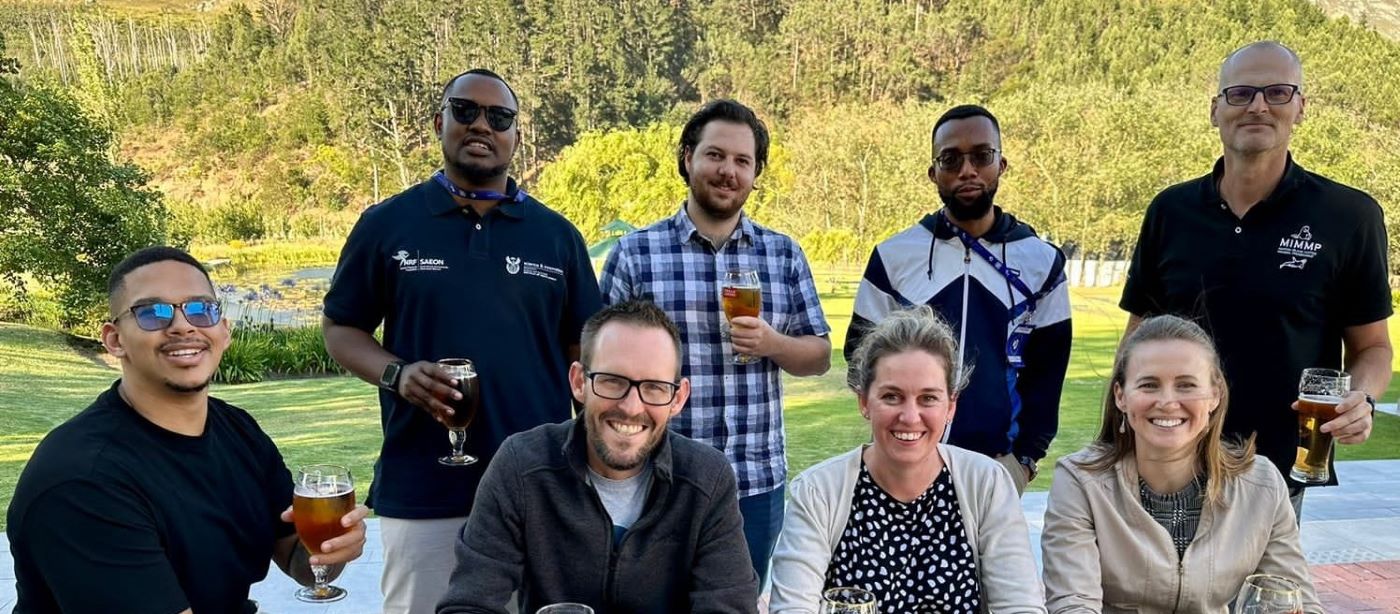
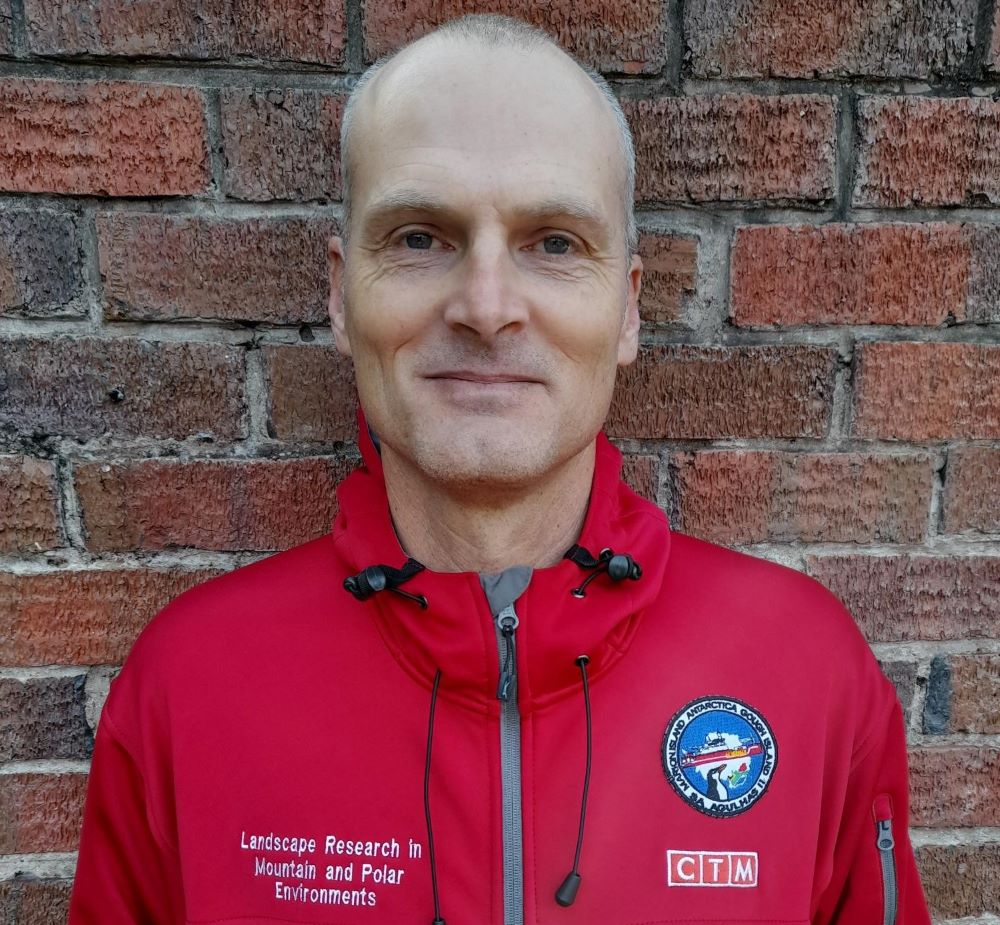 Prof Werner Nel chaired the session on earth system Observations under the title: “Antarctic and sub-Antarctic Earth Science”. The session opened with a talk by Geoff Grantham of University of Johannesburg and Werner then introduced research Landscape and climate interactions in the sub-Antarctic. The session was in the format of a panel and roundtable discussion. (Above group photo of Landscape research in mountain and polar environments)
Prof Werner Nel chaired the session on earth system Observations under the title: “Antarctic and sub-Antarctic Earth Science”. The session opened with a talk by Geoff Grantham of University of Johannesburg and Werner then introduced research Landscape and climate interactions in the sub-Antarctic. The session was in the format of a panel and roundtable discussion. (Above group photo of Landscape research in mountain and polar environments)
 In this session four higher education Institutions were represented.
In this session four higher education Institutions were represented.
 Above l-r: Geoff Grantham (UJ), Liezel Rudolph (UFS), Abu Nguna (UFH), Sibusiso Sinuka (UFH), Zenande Kabase(UFH)
Above l-r: Geoff Grantham (UJ), Liezel Rudolph (UFS), Abu Nguna (UFH), Sibusiso Sinuka (UFH), Zenande Kabase(UFH)
- Dr Geoff Grantham: Geological and Geophysical Research in Western Dronning Maud Land, Antarctica. Fieldwork, Laboratory Methods, History and Progress over ~40 years. (Abstract)
- Prof Werner Nel: Landscape and climate interactions in the sub-Antarctic: Past, present and future. (Abstract)
- Dr Elizabeth Rudolph: The deglaciation of sub-Antarctic Marion Island. (Abstract)
- Mr Sibusiso Sinuka: Towards determining the formation ages of the lithologies on sub-Antarctic Marion Island. (Abstract)
- Mr Abuyiselwe Nguna: Preliminary results of fallout 137Caesium techniques on Aeolian land features on sub-Antarctic Marion Island . (Abstract)
- Mr Zenande Kabase: Long term trends in extreme daily temperature and precipitation on sub-Antarctic Marion Island from 1950 to 2020. (e-Poster)(Abtract)
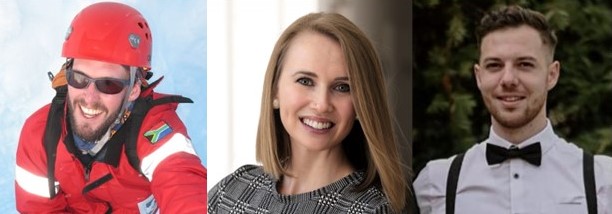 Other presentations of this project were given in the data management and humanities sessions as well as David Hedding in the summer survey as he only joined on 30 November due to the Prince Edward Island Scientific Expedition. (l-R: David Hedding (UNISA), Marike Stander (UFS), Bjorn Boyes (UFS)
Other presentations of this project were given in the data management and humanities sessions as well as David Hedding in the summer survey as he only joined on 30 November due to the Prince Edward Island Scientific Expedition. (l-R: David Hedding (UNISA), Marike Stander (UFS), Bjorn Boyes (UFS)
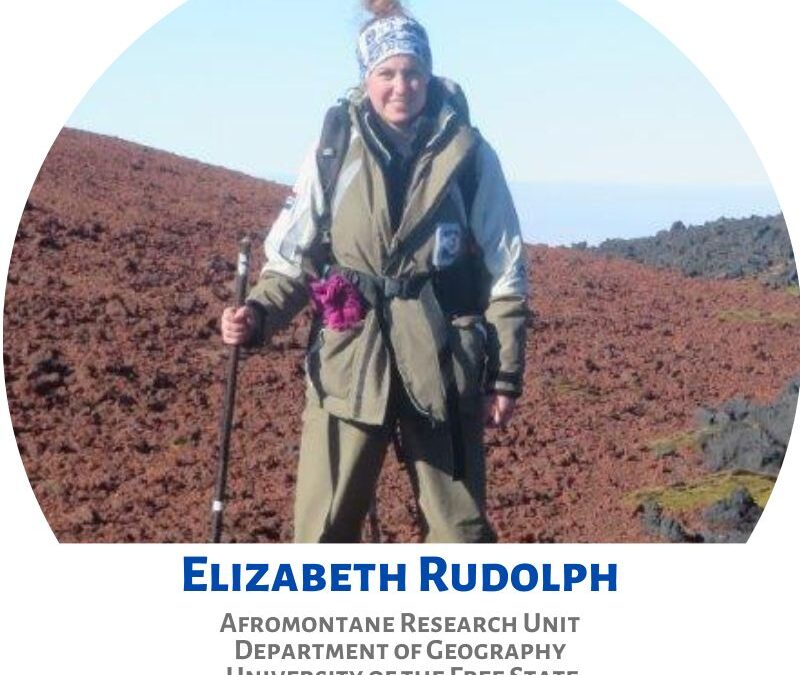
by Ria Olivier | Oct 6, 2022 | Announcement, Geomorphology, Marion Island, News, Prince Edward Island, Prince Edward Islands, Research, SANAP, Science, sub-Antarctic
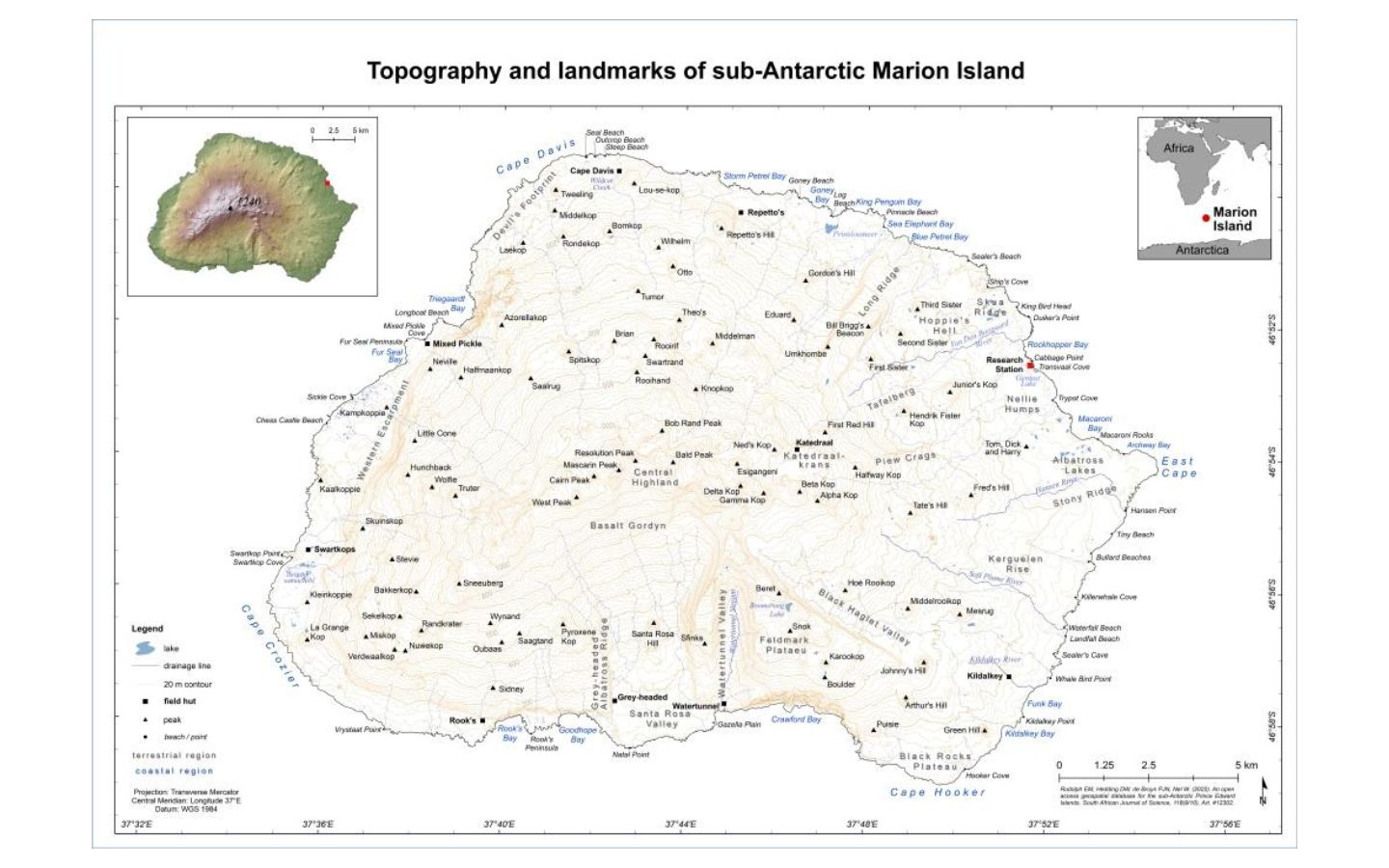
In a new publication, An open access geospatial database for the sub-Antarctic Prince Edward Islands, by Elizabeth Rudolph, David William Hedding, Nico de Bruyn, and Werner Nel, open access is given to a geospatial database for both Marion Island and Prince Edward Island.
Click here to view the full suite of data: Prince Edward Islands Geospatial Database
This paper was presented at the Scientific Committee on Antarctic Research Open Science Conference 2022, in a poster format. Click here to view the poster.
Authors:
Anche Louw, Antarctic Legacy of South Africa, 06 October 2022

by Ria Olivier | May 23, 2020 | Antarctica, Geomorphology, Research, SANAP, SANAP Student, Science, Women in Science
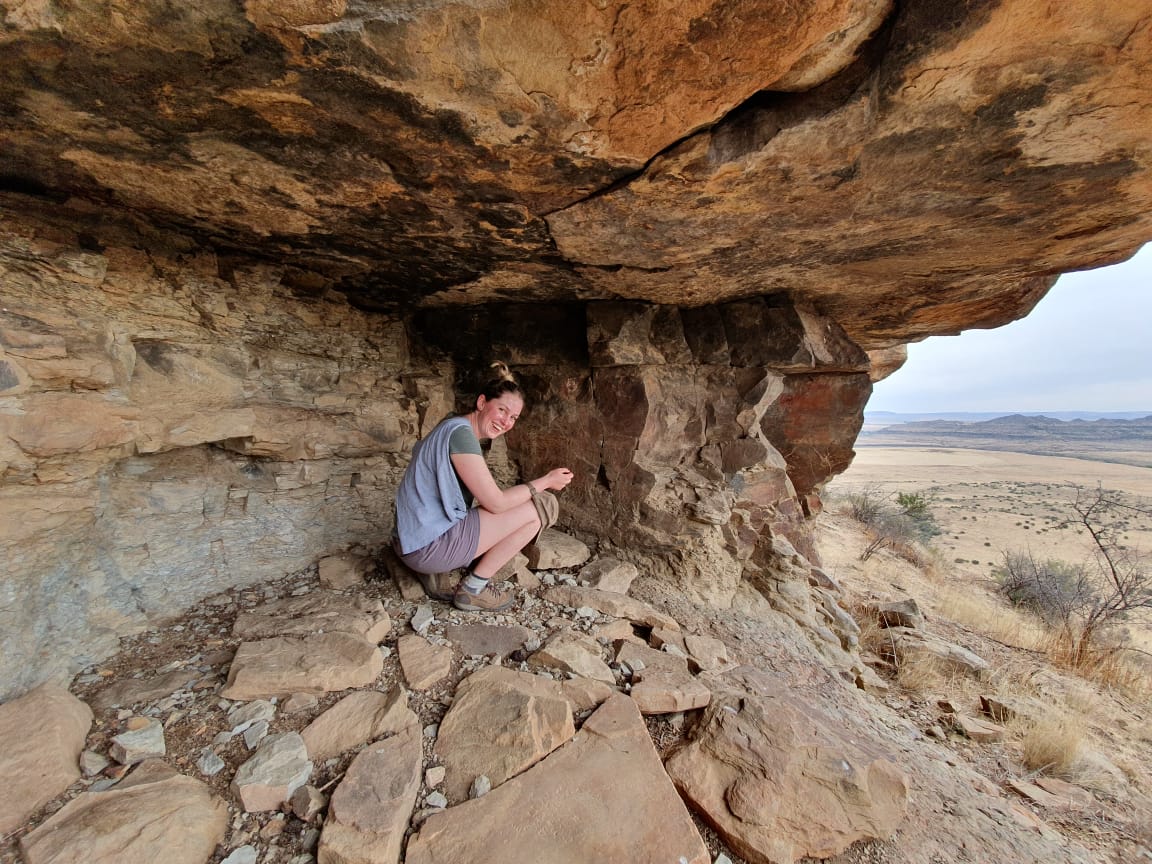 Liezel (Elizabeth) Rudolph obtained her Geography BSc and Honours degrees at the University of Pretoria, and a MSc at Rhodes University. She also has a PGCE from UNISA, which allowed her to teach Geography at Abbott’s College in Pretoria for a few years. She is currently in the final stages of her PhD (also in Geography) at the University of Fort Hare. She currently lectures Geomorphology at the University of the Free State. Her postgraduate research focussed on glacial and peri-glacial landforms and their response to (past and present) climate change. These studies afforded her opportunities to visit the research stations on Marion Island and in the Antarctic, working with SANAP-NRF funded programmes in geomorphology – Landscape Processes in Antarctic Ecosystems and Sub-Antarctic Landscape-Climate Interactions.
Liezel (Elizabeth) Rudolph obtained her Geography BSc and Honours degrees at the University of Pretoria, and a MSc at Rhodes University. She also has a PGCE from UNISA, which allowed her to teach Geography at Abbott’s College in Pretoria for a few years. She is currently in the final stages of her PhD (also in Geography) at the University of Fort Hare. She currently lectures Geomorphology at the University of the Free State. Her postgraduate research focussed on glacial and peri-glacial landforms and their response to (past and present) climate change. These studies afforded her opportunities to visit the research stations on Marion Island and in the Antarctic, working with SANAP-NRF funded programmes in geomorphology – Landscape Processes in Antarctic Ecosystems and Sub-Antarctic Landscape-Climate Interactions.



Where you come from where did it all started
I grew up in Pretoria. I never knew what I wanted to be when I grow up – all my friends had career aspirations, but I had interests. I liked variety and the thought of having one, predictable job for the rest of my life scared me endless. I had a keen interest in earth and physical sciences, but I also really enjoyed the arts and design. However, I was neither a Newton nor a Michelangelo at school and the prospect of either as a career path did not sit quite well with me. By the time I finished school I could still not decide on a single career and nothing in the university catalogues seemed to tick all the boxes. So, by process of elimination, I crossed out everything that sounded boring or would involve living creatures (I faint at the sight of blood), and the only thing that was left was Geography. I should’ve known – it’s a science that allows, no, encourages, variety of thought and expression. But I didn’t end up in research straight away. After I finished my Honours in Geography, I taught high school for a few years before returning to full-time studies to pursue a Masters. During my Masters though, I truly missed teaching. There’s something magical about sharing your passion on a subject with young people, and them getting equally excited about it. Its then that I realised a career where I can actively pursue my research interests, and teach, would be my dream job. I don’t believe I could’ve reached this realisation on my own. I had many mentors (parents, teachers, bosses, supervisors) who could lead, inspire and guide me. Through my post-school adult years, I didn’t always know how things will play-out, but I stuck to things I enjoyed and tried to do everything to the best of my ability. I could have followed a more predictable career path, but I may not have been so excited about it, as I am about what I get to do now. I am now lecturing Geomorphology at the University of the Free State and pursuing a PhD in Geography which, on top of everything, is on a topic I’ve been fascinated with since I first read a short story in my English class, at age 11 – glaciers.
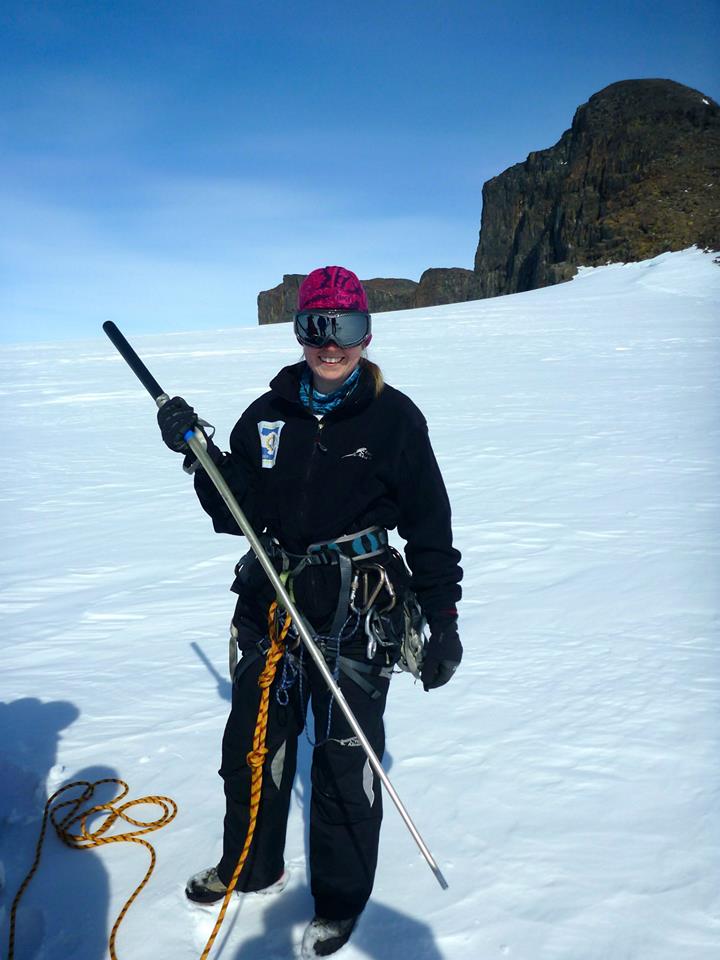
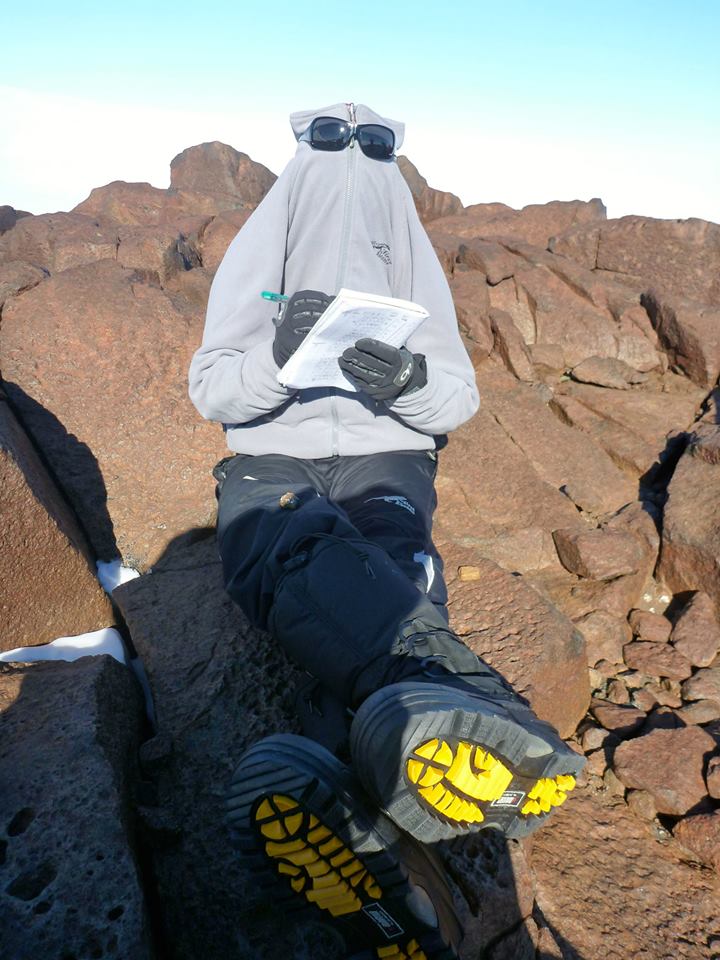

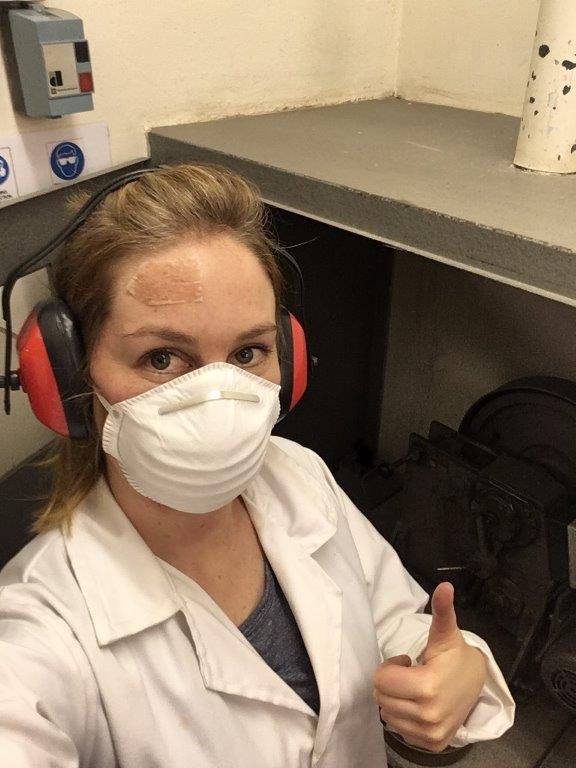
Why you love your career in science?
It never grows old. With new discoveries come a flood of new unanswered questions. It pushes your mental limits and if you like that sort of challenge, you won’t easily get bored. Geography, especially, allows you to think both critically and creatively – it’s like playing a game with rules, but you are allowed to invent new rules. It allows you to visit amazing landscapes (if you’re a Geographer) and meet new and interesting people. Perhaps the best part of is, that it allows you to explore something you are very curious about, and you get to share your findings with an audience that are interested. At the same time, you benefit from what others have discovered about their own curiosity. It’s a constant learning process. In my experience I’ve gotten to work with incredible minds in the Southern African Geomorphology community, and have had the privilege to meet world-class scientists form other fields within the greater SANAP community – all who very passionate about their research fields and to whom I owe much of my passion for science. I am currently serving on the Association of Polar Early Carer Scientists’ South African National Committee (APECSSA), which has awarded me the opportunity to meet other early career scientists, not only from the Earth Science field, but from the Ocean-, Biological-, Botanical- and Space-physics sciences, to name a few. I don’t know of many other careers that would you expose you to such a variety of people and places.
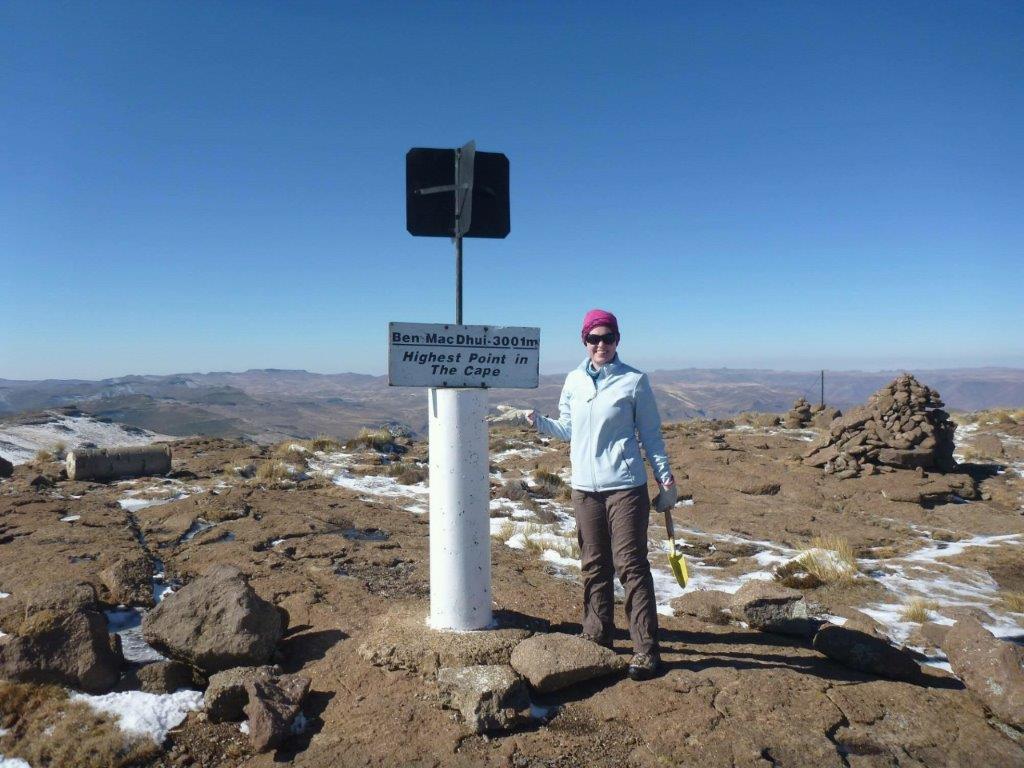
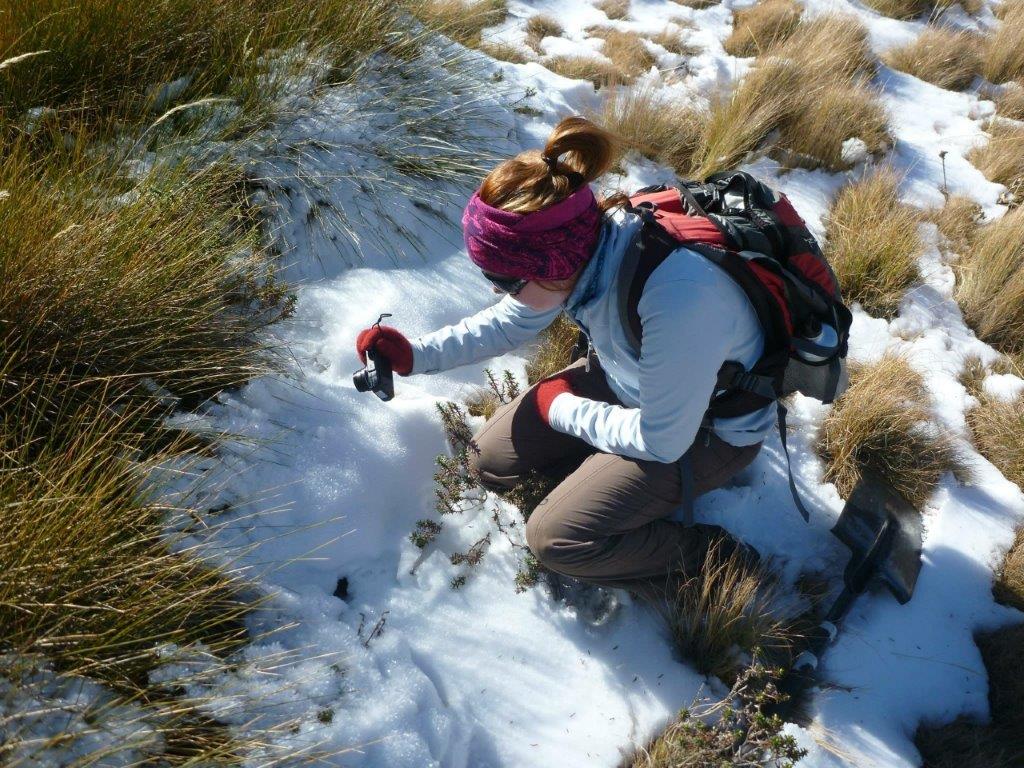
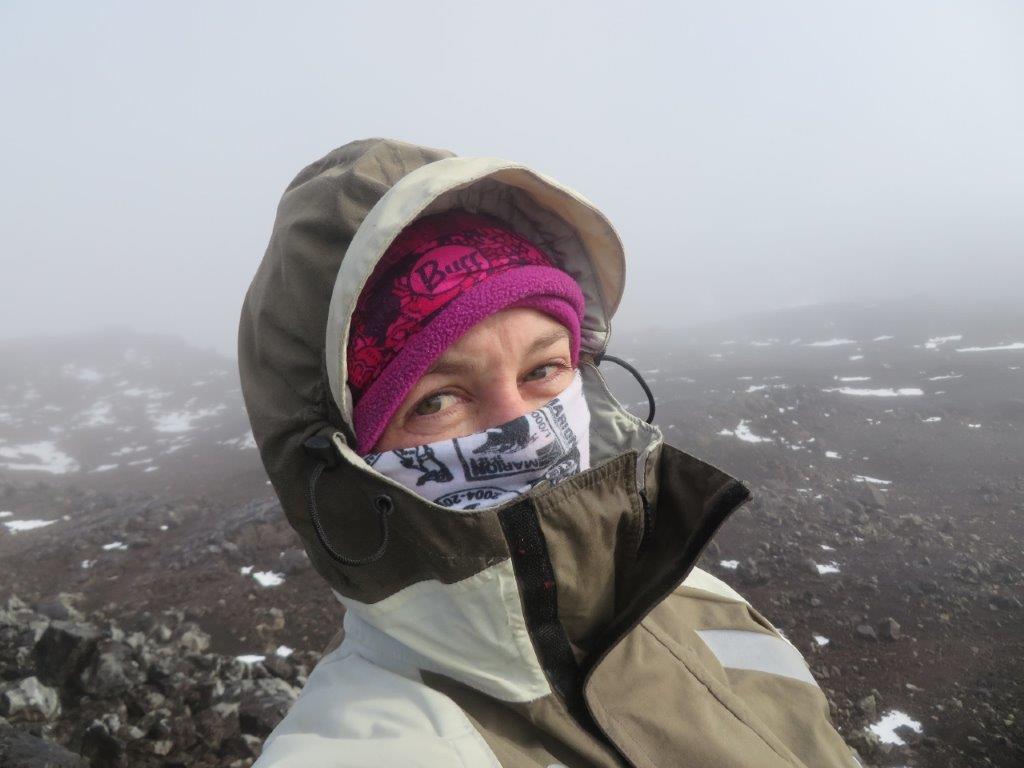
“Science is like art, perhaps with a few more rigorous guidelines, and it allows you to draw on your own unique talents – just like an artist has a specific style. So, you should play by the rules, but you don’t have to fit a mould. Find mentors and listen to their advice. Make your own decisions and take responsibility for yourself. Don’t do anything halfies – finish what you’ve started and do it properly, or leave it all together. I believe that no time spent doing something well, is ever time wasted – experience is what makes us human. People will always be more important than science, so value your personal and professional relationships.” – Liezel
Links:
google scholar: https://scholar.google.co.za/citations?user=lwGJSqAAAAAJ&hl=en
Facebook: https://web.facebook.com/apecssa/ ;
https://web.facebook.com/sanaplci/
Twitter: @Apecssa; @sanaplci
Interview: GrootOntbyt /GrootFM 90.5, a community radio station in Pretoria.
Interview: at Aktru research station, in Siberia.
Article: Early glacial maximum and deglaciation at
sub-Antarctic Marion Island from cosmogenic 36Cl exposure dating
Text and Images: Liezel Rudolph
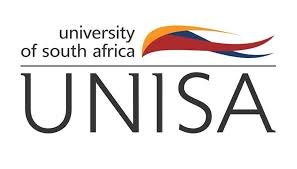
by Ria Olivier | May 18, 2020 | Antarctica, Geomorphology, Marion Island, Research, Science
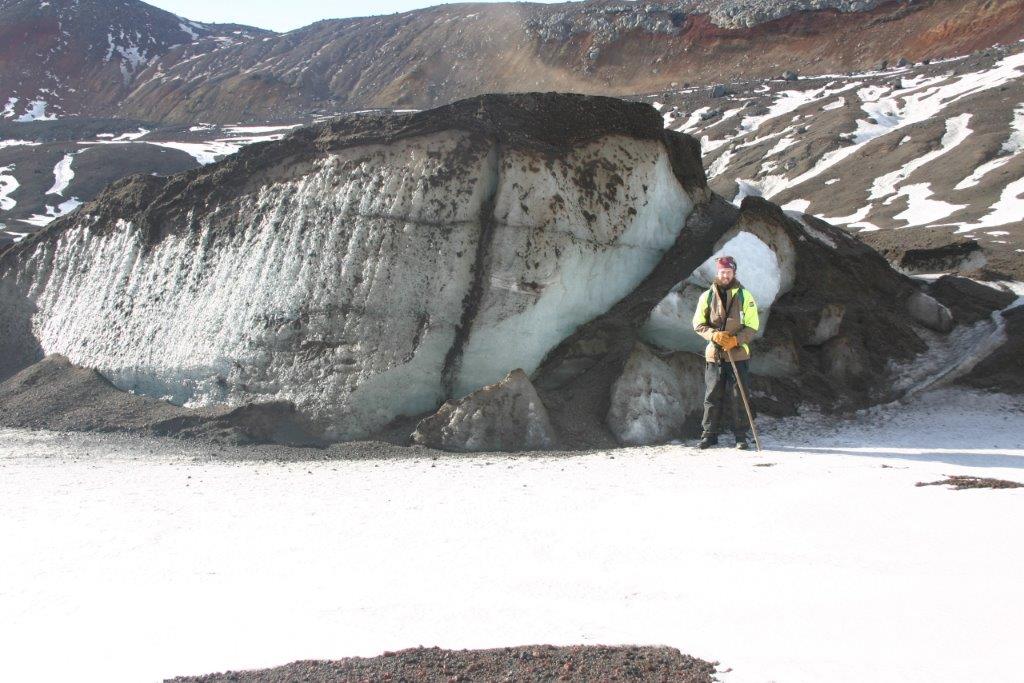 David William Hedding was born in Johannesburg and grew in Benoni on the East Rand (please don’t hold it against me) before going to boarding school in Pretoria. After a year in Ireland, I returned to study for a BSc in Geoinformatics at the University of Pretoria but it wasn’t long before the call of the mountains ignited my passion for geomorphology. This led to a switch into a BSc (Hons) in Geography to focus on physical geography. This is where it all started and I spent most of 2003 on field trips to the Drakensberg, Lesotho, Namibia as well as Marion Island where I conducted my first real piece of research which was to be published several years later. That first trip to Marion Island was a truly amazing experience and was fortunate enough to share a room with Marthan Bester and experience the life in the old base with all its leaks and mice. Two current Principal Investigators were also students and field assistants on that take-over. (Images Top: Marion Island Ice Plateau. Below: On Marion Island (l-r): Junior’s Kop, Tafelberg, Mesrug )
David William Hedding was born in Johannesburg and grew in Benoni on the East Rand (please don’t hold it against me) before going to boarding school in Pretoria. After a year in Ireland, I returned to study for a BSc in Geoinformatics at the University of Pretoria but it wasn’t long before the call of the mountains ignited my passion for geomorphology. This led to a switch into a BSc (Hons) in Geography to focus on physical geography. This is where it all started and I spent most of 2003 on field trips to the Drakensberg, Lesotho, Namibia as well as Marion Island where I conducted my first real piece of research which was to be published several years later. That first trip to Marion Island was a truly amazing experience and was fortunate enough to share a room with Marthan Bester and experience the life in the old base with all its leaks and mice. Two current Principal Investigators were also students and field assistants on that take-over. (Images Top: Marion Island Ice Plateau. Below: On Marion Island (l-r): Junior’s Kop, Tafelberg, Mesrug )
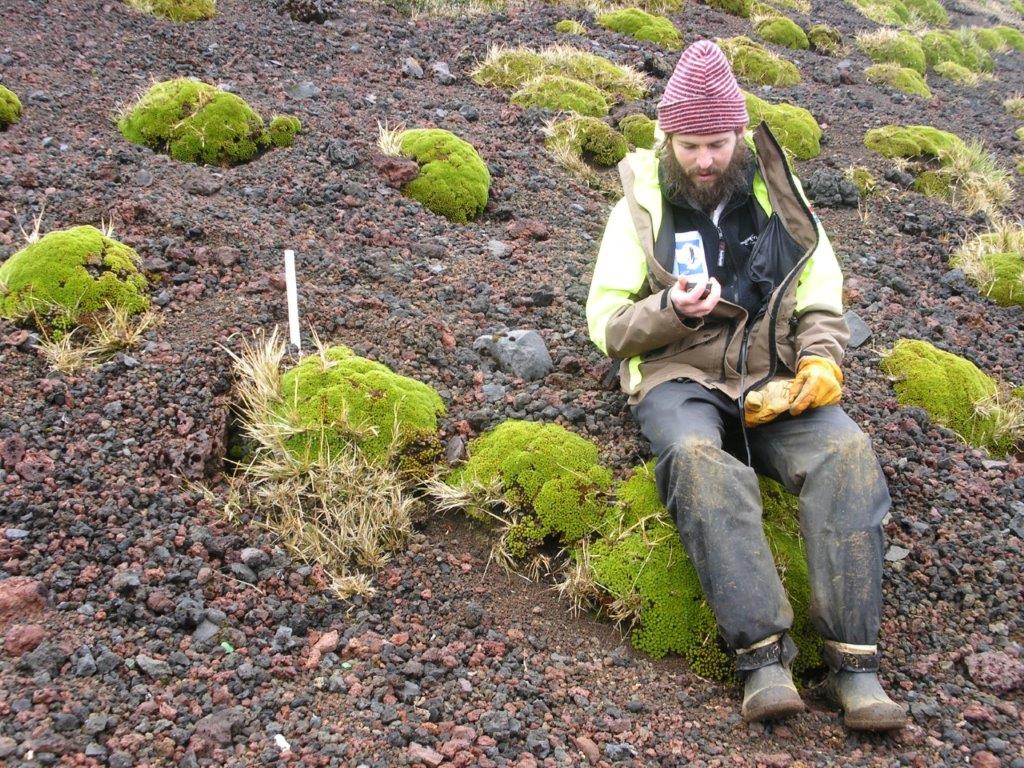


In 2004/05, I overwintered on Marion Island to complete my MSc on the geomorphology of the Central Highland of Marion Island. This led to many, many nights up at Katedraalkrans and countless adventures into the interior and Ice Plateau. In 2006, I took up a lectureship in Mahikeng (NWU) and I participated in two summer take-overs to SANAE IV (2007 and 2008). After two good years at NWU, I moved to Unisa where I still work today. Between 2008 and 2012, I had somewhat of a hiatus from the South African National Antarctic Programme (SANAP). I used this time to complete my PhD which focused on pronival ramparts. In 2013, I was invited to join Prof. Werner Nel as part of the Geomorphology Group for a take-over. This return to working on Marion Island has led to several collaborations and I have consistently participated in take-overs since then as co-investigator of the Geomorphology Group. (Images below: Antarctica)

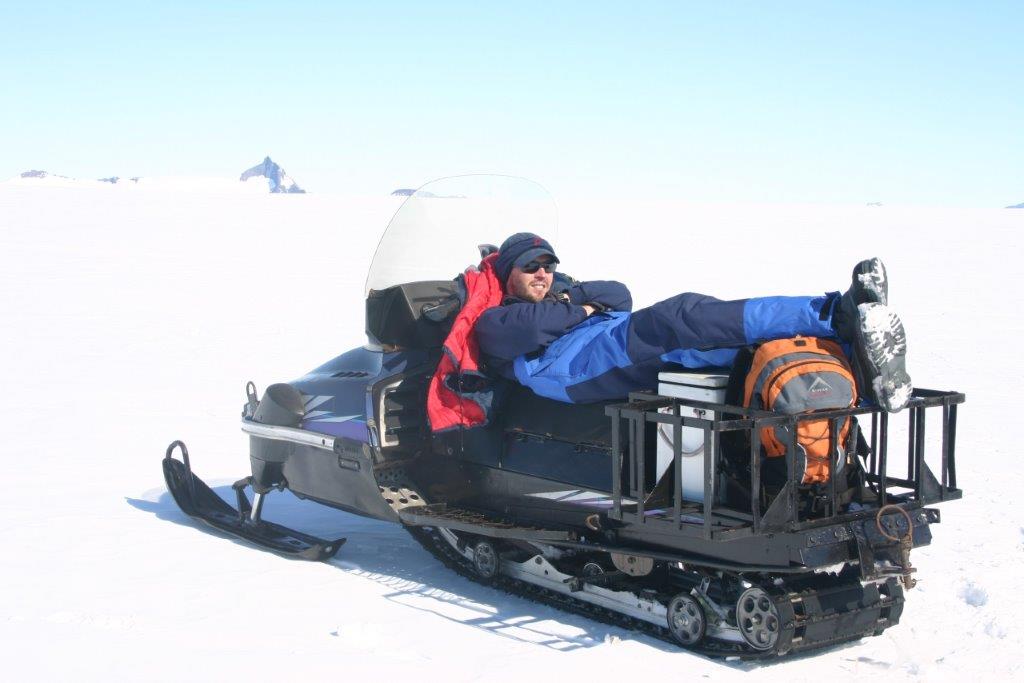
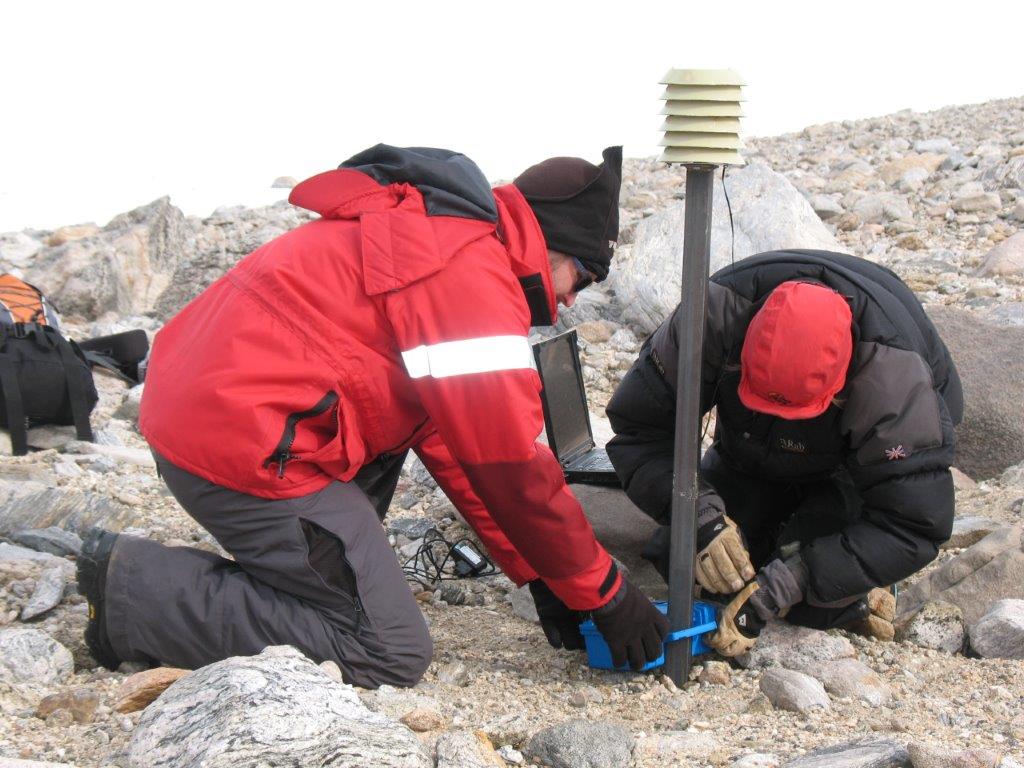
I truly love teaching and training students, but I enjoy research most of all. Gaining a better understanding of how earth surface processes operate, particularly in the context of climate change, is a never-ending quest. Climate change as well as the responses of landscapes to climate change impacts ecosystems so understanding these responses is crucial to get a clearer idea of what is currently happening on the island and elsewhere in the world. In addition, investigation of past landscape responses is also vitally important, and the Geomorphology Group is currently hard at work to reconstruct the glacial history of Marion Island. Currently, I am also the Principal Investigator of a NRF / NSFC funded grant with Chinese collaborators. This grant focuses on weathering and landscape evolution of basaltic fields and has led to several publications. I have also been extremely fortunate enough to have conducted research in New Zealand, Mauritius and Siberia and I have been involved in a little research on the transformation of the Higher Education sector in South Africa as well as the changing and challenging research landscape in South Africa. (Images below l-r: New Zealand, Siberia, Mauritius)
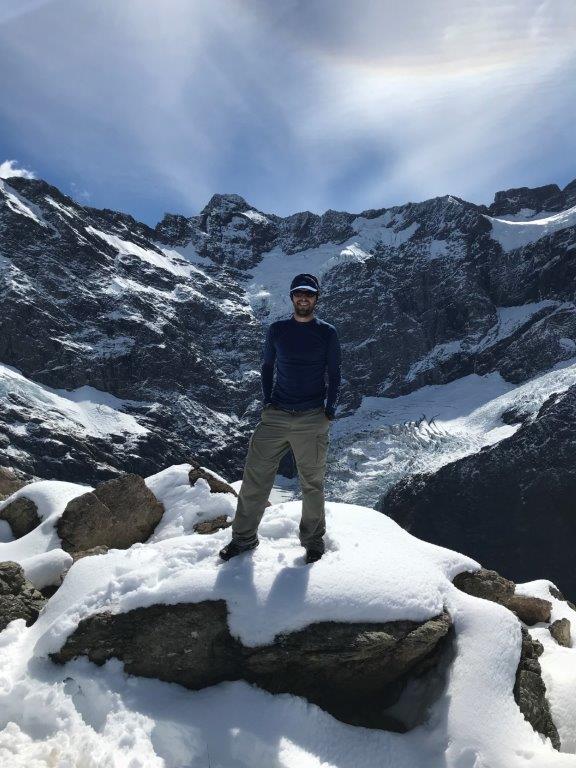
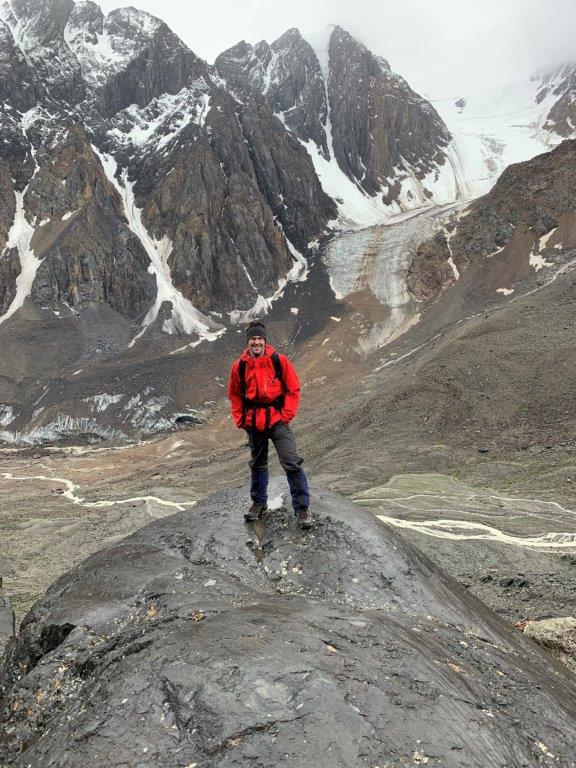
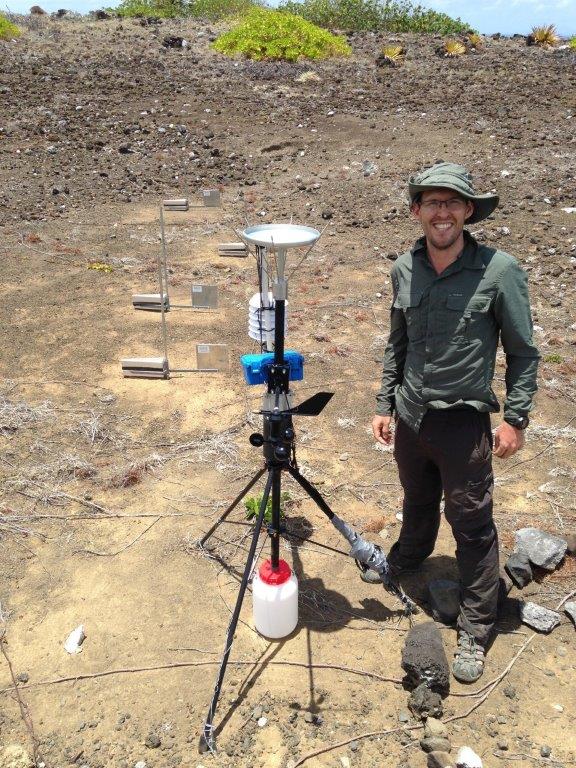
Through the South African National Antarctic Programme (SANAP), I have been lucky enough to have been mentored and supervised by Profs Paul Sumner and Ian Meiklejohn who provided me with many opportunities for which I will be eternally grateful. During various voyages I have met many inspiring scientists who are truly incredible people, many of whom I can call friends. In particular, I now have the privilege of working with a passionate team led by Prof. Werner Nel, who I have known for almost two decades. This close working relationship has led to several epic adventures to not only Marion Island but also to the Antarctic, Siberia, China and Mauritius. And over the years, I have also supervised some amazing students who have worked hard and succeeded. This aspect has been particularly rewarding. As a researcher, my aim is simply to do good science and I truly enjoy collaborating with others. The diversity of the research conducted within SANAP is one of its strengths. Several different projects have made great strides in providing a better understanding of different aspects of Marion Island and the Antarctic and the integration of this research has the ability provide a better understanding of how these environments operate, as a whole, in a changing world. Research is difficult and hardly ever turns out exactly as planned, 2020 is a prime example of this. So, my advice to fellow early career scientists is to collaborate as much as possible, particularly with researchers in other disciplines and projects. Then to those post-graduate students out there, just persevere and do the best you can in these trying times. COVID-19 is impacting everyone so colleagues and students alike need to look after their physical and mental health and hopefully we will all be able to return to our field sites in the near future to conduct the work we love.


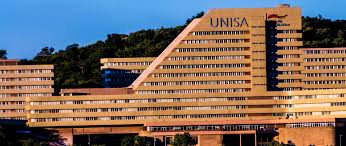
Unisa’s Associate Professor David Hedding, from the Department of Geography in the College of Agriculture and Environmental Sciences (CAES), is one of the recipients of the 2019 Chancellor’s Awards for Excellence in Research. This award is a way of recognising those who strive for excellence in research and the prize is regarded as the most prestigious for research and innovation at Unisa. Hedding has received the same award more than once.
Text: David Hedding. Photo credits: David Hedding. Cover Photo taken in Siberia.
 The International Conference on Geomorphology (ICG) 2025 is set to take place in breathtaking New Zealand, a land renowned for its dynamic landscapes and geological wonders. This global gathering of geomorphologists will provide a platform for cutting-edge discussions on landform processes, climate interactions, and Earth surface dynamics. We invite researchers, early-career scientists, and professionals to contribute to this exciting event by submitting abstracts to the special session:
The International Conference on Geomorphology (ICG) 2025 is set to take place in breathtaking New Zealand, a land renowned for its dynamic landscapes and geological wonders. This global gathering of geomorphologists will provide a platform for cutting-edge discussions on landform processes, climate interactions, and Earth surface dynamics. We invite researchers, early-career scientists, and professionals to contribute to this exciting event by submitting abstracts to the special session:
 Who Should Submit?
Who Should Submit? Message from Prof Werner Nel:
Message from Prof Werner Nel: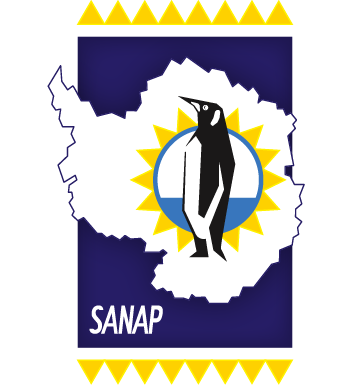

 Article published by Werner Nel, Dominic Hodgson, David Hedding, Alex Whittle and Elizabeth Rudolph
Article published by Werner Nel, Dominic Hodgson, David Hedding, Alex Whittle and Elizabeth Rudolph

 Prof Werner Nel chaired the session on earth system Observations under the title: “Antarctic and sub-Antarctic Earth Science”. The session opened with a talk by Geoff Grantham of University of Johannesburg and Werner then introduced research Landscape and climate interactions in the sub-Antarctic. The session was in the format of a panel and roundtable discussion. (Above group photo of Landscape research in mountain and polar environments)
Prof Werner Nel chaired the session on earth system Observations under the title: “Antarctic and sub-Antarctic Earth Science”. The session opened with a talk by Geoff Grantham of University of Johannesburg and Werner then introduced research Landscape and climate interactions in the sub-Antarctic. The session was in the format of a panel and roundtable discussion. (Above group photo of Landscape research in mountain and polar environments) In this session four higher education Institutions were represented.
In this session four higher education Institutions were represented. Above l-r: Geoff Grantham (UJ), Liezel Rudolph (UFS), Abu Nguna (UFH), Sibusiso Sinuka (UFH), Zenande Kabase(UFH)
Above l-r: Geoff Grantham (UJ), Liezel Rudolph (UFS), Abu Nguna (UFH), Sibusiso Sinuka (UFH), Zenande Kabase(UFH)  Other presentations of this project were given in the data management and humanities sessions as well as David Hedding in the summer survey as he only joined on 30 November due to the Prince Edward Island Scientific Expedition. (l-R: David Hedding (UNISA), Marike Stander (UFS), Bjorn Boyes (UFS)
Other presentations of this project were given in the data management and humanities sessions as well as David Hedding in the summer survey as he only joined on 30 November due to the Prince Edward Island Scientific Expedition. (l-R: David Hedding (UNISA), Marike Stander (UFS), Bjorn Boyes (UFS)


 Liezel (Elizabeth) Rudolph obtained her Geography BSc and Honours degrees at the University of Pretoria, and a MSc at Rhodes University. She also has a PGCE from UNISA, which allowed her to teach Geography at Abbott’s College in Pretoria for a few years. She is currently in the final stages of her PhD (also in Geography) at the
Liezel (Elizabeth) Rudolph obtained her Geography BSc and Honours degrees at the University of Pretoria, and a MSc at Rhodes University. She also has a PGCE from UNISA, which allowed her to teach Geography at Abbott’s College in Pretoria for a few years. She is currently in the final stages of her PhD (also in Geography) at the 










 David William Hedding was born in Johannesburg and grew in Benoni on the East Rand (please don’t hold it against me) before going to boarding school in Pretoria. After a year in Ireland, I returned to study for a BSc in Geoinformatics at the University of Pretoria but it wasn’t long before the call of the mountains ignited my passion for geomorphology. This led to a switch into a BSc (Hons) in Geography to focus on physical geography. This is where it all started and I spent most of 2003 on field trips to the Drakensberg, Lesotho, Namibia as well as Marion Island where I conducted my first real piece of
David William Hedding was born in Johannesburg and grew in Benoni on the East Rand (please don’t hold it against me) before going to boarding school in Pretoria. After a year in Ireland, I returned to study for a BSc in Geoinformatics at the University of Pretoria but it wasn’t long before the call of the mountains ignited my passion for geomorphology. This led to a switch into a BSc (Hons) in Geography to focus on physical geography. This is where it all started and I spent most of 2003 on field trips to the Drakensberg, Lesotho, Namibia as well as Marion Island where I conducted my first real piece of 











